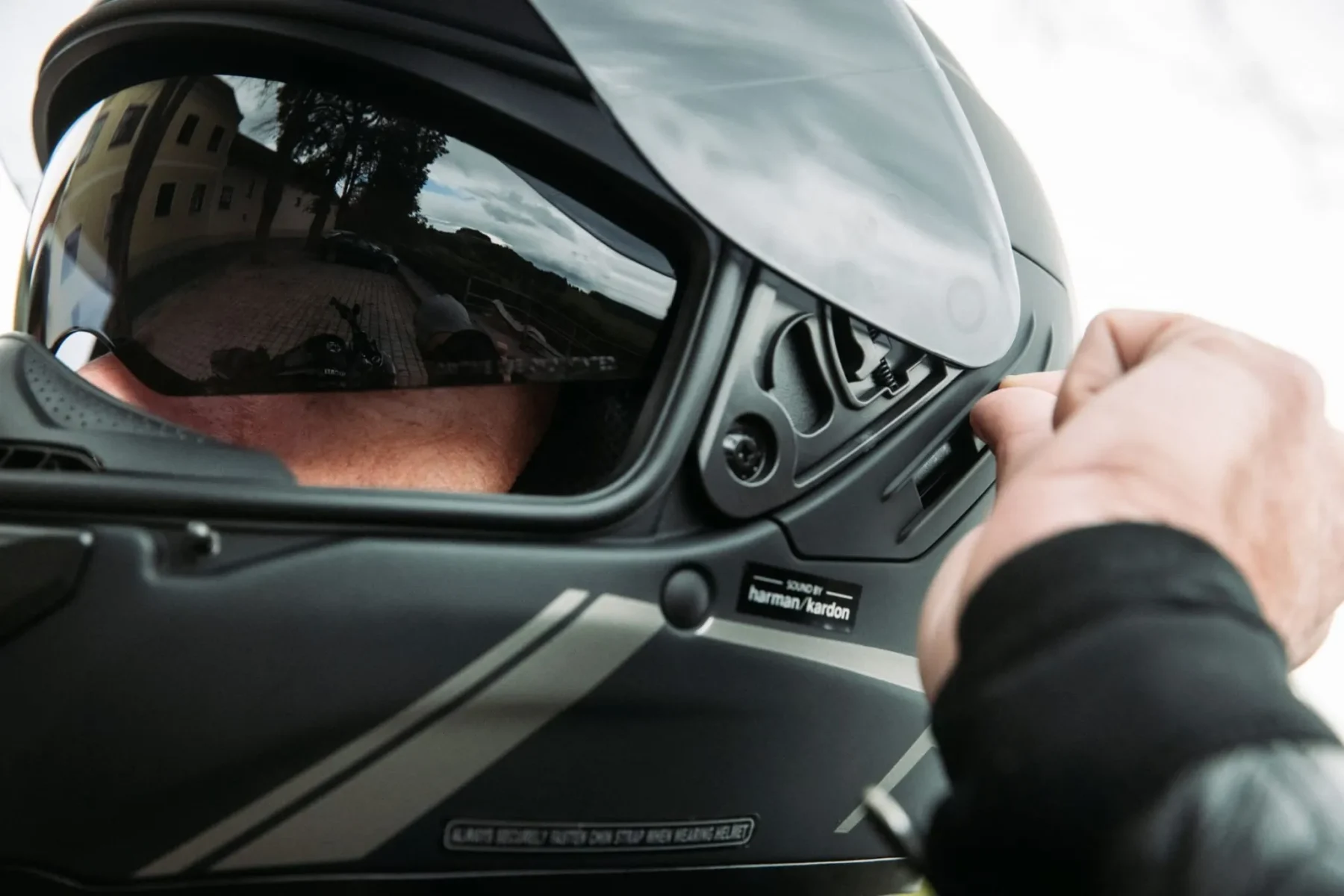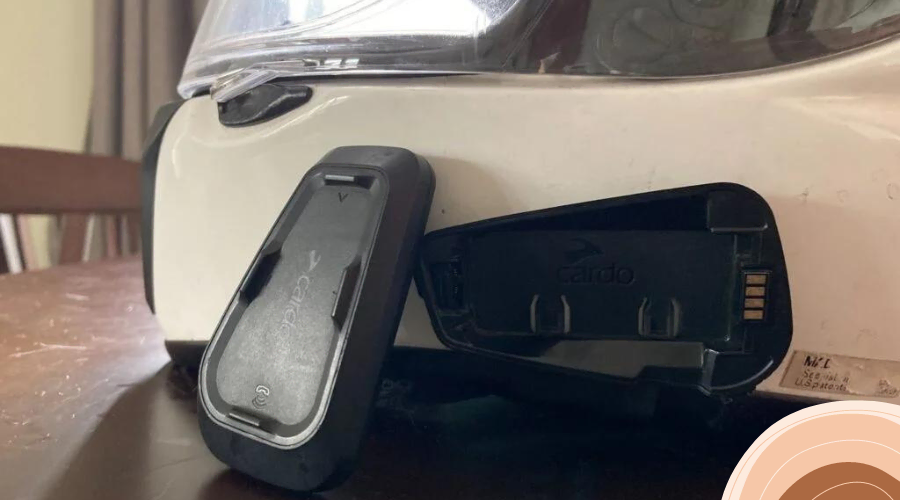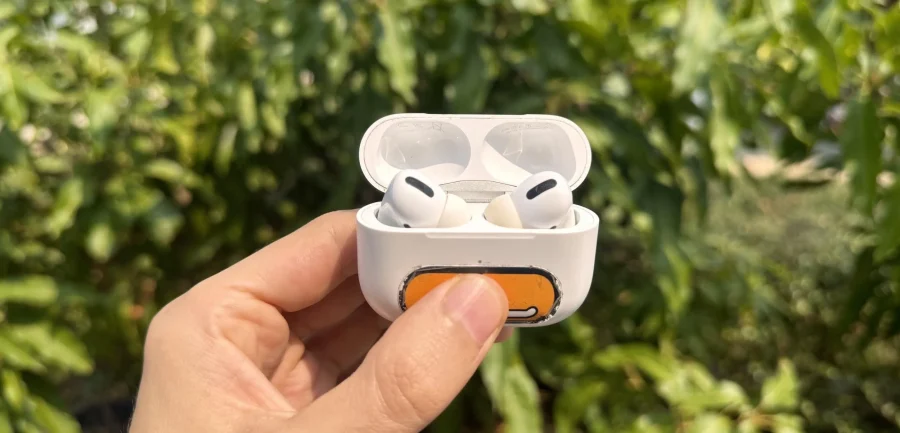
Are Bluetooth Motorcycle Helmets Worth It?
left for contents
I have something to admit.
Before I rode a motorcycle, I laughed at motorcycle riders.
I didn’t understand it! Why would you want to risk your life and brave the elements on two wheels? I was just fine in my car.
Then I got on a motorcycle for the first time…

NOW I get it. And I am hooked for life. I can’t imagine living without riding motorcycles. Doesn’t matter what kind. 125cc two stroke or 114ci Harley; there’s just nothing else like twisting a throttle.
When I started riding, I laughed at people with Bluetooth helmets and headsets. Who needs a $200 device just to ruin the silence of the road?
Until I bought one for myself, and it changed my rides forever. Adding music to my ride and being able to chat with my buddies while we carve some of the most beautiful rides in the world? That’s worth far more than the price tag of a Bluetooth helmet.
But is it worth it for you? Here’s my experience with Bluetooth communicators when you ride.
The Case for Bluetooth Communicators
Whether we’re talking a pre-integrated Bluetooth helmet or an add-on Cardo or Sena unit for your existing helmet, I’ve found these to be huge pluses of these units:
- Music on your ride: For me, music makes riding so much better. It calms my nerves which makes me a more predictable, measured rider. Plus, it just adds to the enjoyment. Bluetooth units, in a nicely sealing helmet, make music simple. Put on the helmet and go.
- Better, safer, more fun group rides: Not only can you yuck it up with your fellow riders while you’re on the road, it’s also so much easier to call out road hazards and passing opportunities. I find having communicators is especially helpful on mountain roads with friends, because as soon as the lead rider passes they can call out whether the road ahead is open or not, even several curves ahead of the next rider’s view. That makes for a much more fun ride than getting stuck behind a truck until the whole group can pass.
- Controls right at your fingertips (or voice activated): Adjust volume, skip songs, take calls, get directions with your voice. Earbuds don’t have this. Earbuds don’t have this. Easy to take calls, adjust volume, etc. Doing so on your phone while riding, even with your phone mounted, is dangerous and difficult. I almost veered off the highway many times while just trying to bump the volume.
The first Bluetooth unit I tried personally was the Cardo Spirit, and I was shocked at just how simple and easy it was to get connected to another rider (my dad) and use while on the road. After initial connection, there was nothing to do but turn it on each morning and off each night.

Music came through nicely and turned down in volume for GPS directions and whenever my dad spoke. After 15 minutes riding and adjusting the boom mic on my dad’s modular helmet, the mic never flicked on accidentally. It was like we were sitting next to each other at a table, except we were carving the Million Dollar Highway in Colorado.
The Case for Bluetooth Motorcycle Helmets
I’ll get in to standalone Bluetooth units that you can add to any helmet further down – but I want to talk about pre-integrated Bluetooth helmets first.
Sena makes several of these that just rock. You can take calls, chat with other riders, listen to music, and get GPS directions all right out of the box. No installation necessary.

And Sena’s high-end Bluetooth helmets like the Sena Stryker even include integrated taillights to improve your visibility.
But the best part? Integrated Bluetooth helmets are often cheaper than other helmets with add-on Bluetooth units.
Integrated Helmets Cost Less than Add-On Units
Helmets with pre-integrated Bluetooth devices usually cost less than a comparable helmet and a standalone communications kit.
Let me give you an example.
I think the best Bluetooth helmet on the market today is the Sena Stryker. It’s made of premium materials and has a taillight. It connects to virtually limitless riders and pipes music to your ears through Harman Kardon speakers.

For those headset specs alone, you’d need to buy a Sena 50S. That will set you back over $300.
A comparable helmet to the Sena Stryker without integrated Bluetooth will cost around $300 too.
Stick on and wire up an integrated tail light for another $50.
Altogether you’re looking at $650 to build the Sena Stryker yourself. But without integrated controls, a big battery, or a pre-installed Bluetooth system.
The Sena Stryker costs less than that.
When you run the numbers, the price of most Bluetooth helmets starts to look like a good deal.
Pre-Integrated Bluetooth Helmets Are Still Safe
I get it – a helmet is about safety, so wouldn’t you want to buy the safest possible helmet and worry about adding a Bluetooth intercom system later?

Sure, but you aren’t giving up safety when you’re getting a high end Bluetooth helmet. Safety comes down to the shell material, EPS foam, and safety certifications.
The Sena Stryker pre-integrated Bluetooth helmet nails it…
- Quality Shell Material: Composite fiberglass, which is much better at impact absorption than the usual polycarbonate plastic.
- Multi-density EPS foam: to absorb low and high speed impacts equally. Higher density for bigger knocks, lower density for smaller ones.
- DOT and ECE certified: exceeding almost all helmets with that ECE certification, which tests rotational forces and multiple knocks.
Plus, you get a tail light on the Stryker. And no Bluetooth unit or wires hanging off on the outside.
Sounds even safer than some other high end helmets…
Bluetooth units in general increase safety. In a big group, you can call out debris on the road and upcoming turns. You can change music or ask for directions without touching your phone through Google Assistant or Siri. You can forgo hand signals and keep your hands on the bars.
Bluetooth Comms Make Riding More Fun
Taking calls and talking to your friends on the road just makes riding more fun and easy.
You don’t have to pull over when your wife calls you to tell you what happened on the Bachelor last night – you can just ride through it.
You don’t have to wave and honk like a maniac to tell your buddies you want to pull over to eat – just talk to them over the intercom.

You don’t have to stop in the mud to tell your group about the fork in the trail up ahead – just mention it as if they were right next to you.
These are things I just did not appreciate until I owned a Bluetooth intercom unit myself.
Music Adds a Soundtrack to your Ride
I used to use headphones to listen to music while I went on rides alone. Sound quality was decent, but the speakers these days on Bluetooth headsets beats most headphones, especially with bass.
For me, music is essential to a ride.
If art decorates space, then music decorates time.

Riding a two-lane country road with George Strait or Florida Georgia Line booming in my ears just hits different. Much better than the squeal of wind and drone of an idling engine.
Headphones can do the trick, but they have a few problems:
- They get smashed up against your head by any decent helmet
- They either seal too well, or not enough
- They lack the bass needed to overcome the sounds of the road
- They don’t let me chat with my crew as I ride.
Plus, I can’t get the radio in my headphones. That’s helpful for weather and traffic reports. However, I can get FM radio with just about any Bluetooth headset these days.
For anyone who needs music in their life and inside the helmet they use, having a Bluetooth motorcycle helmet is a game-changer.
Cons of Bluetooth Motorcycle Helmets
Now is when I rain on my own parade. Bluetooth helmets are not perfect for everyone. Here are the flaws.
When You Hit Tech Issues…
If your Bluetooth system is integrated in to your helmet, you can’t just take the guts out and send them in for repairs. You have to send the whole helmet in for repairs.

If you’ve ever dealt with tech support for just about anything, you know what I’m saying. If your only helmet is an integrated Bluetooth helmet, you might be without a lid for a while.
Another tech issue is cross-brand connectivity. The Sena Stryker that we’ve already looked at has a universal intercom so it can work with different Bluetooth helmets and budget brands. However, not all Bluetooth helmets have universal pairing. Whatever you buy, make sure you and your riding buddies can connect your communication systems together.
Upgrading your Bluetooth Motorcycle Helmet
Technology moves fast. When you buy a pre-integrated Bluetooth helmet, you’re married to the tech inside that helmet until you stop using that helmet.

Buying an add-on Bluetooth kit makes it easier to upgrade components – like speakers and comms units – whenever you want. Speakers for these headsets just a few years ago got tinny and distorted with high volumes. Now Harman Kardon and JBL make amazing headset speakers.
You’re also locked in to a max number of intercom participants. However, with the Sena Stryker’s limitless Open Mesh setting, that’s not an issue!
Alternatives to Bluetooth Motorcycle Helmets
Not sold on the idea of investing in an integrated full-face or modular Bluetooth helmet? If you still want a communication system but don’t want a whole new motorcycle helmet, there are other options.
Add a Bluetooth Headset
There are lots of Bluetooth headsets that you can add to your current lid. It’s easy to get attached to motorcycle helmets and changing it just to get built-in Bluetooth doesn’t always make sense.
You can invest in a solid kit, mount it yourself and add audio capabilities to your beloved helmet.

Pros of mounting a Bluetooth headset to your motorcycle helmet
- You get more choice, including on the budget and the technology you need – you might not need mesh for 24 riders but you want the best speaker system money can buy.
- It’s easy to change the mounting between helmets – most velcro or clip on so you can migrate your Bluetooth setup when you get a new helmet.
- You can upgrade components like speakers, or buy a better unit for your existing helmet that supports further range or more intercom participants.
Cons of adding a Bluetooth headset to your motorcycle helmet
- You’ll have to install the speakers, microphone, and unit yourself. Route the wires yourself, keep the speakers from rubbing against your ears, and deal with the bulky communicator unit on your helmet.
- You’ll have a unit hanging off the side of your helmet instead of sleek controls
- Your battery won’t last as long as the systems that come pre-integrated in to helmets
- Some Bluetooth headsets can be pretty pricey – add that to the price of your next helmet and you could be paying more for less.
Use Earbuds
Any skeptic reading this is probably screaming at the screen “use earbuds!!” These can be a reasonable option, but they don’t replace all the features your Bluetooth helmet system offers.

Pros of using earbuds instead of a Bluetooth helmet
- You can use them in more situations than just riding your motorcycle, so they could be better value for you.
- Some earbuds have active noise cancelling technology that helps cut out wind and traffic noise as you ride.
Cons of using earbuds instead of a motorcycle helmet Bluetooth rig
- You won’t be able to communicate with other riders in your group – fine if you ride solo, but a big miss if you ride with others.
- You’ll need to reach for your phone to change music volume, directions, or take calls. That negates the safety element of a more full-featured Bluetooth headset.
- Earbuds can be easy to misplace or drop, especially when you’re pulling off a good-fitting helmet from over your ears.
- You lose out on rider-to-rider intercom.
- Earbuds have a much shorter battery life than a dedicated Bluetooth helmet system.
- They might be illegal: Some states and countries outlaw headphone use (but not speakers over the ears) while riding a motorcycle.
Are Bluetooth Motorcycle Helmets Worth It?
A bluetooth helmet can be a worthwhile investment if you want a Bluetooth unit and need a new helmet anyway.
They’re often cheaper than adding on a Bluetooth unit to another helmet, with only a few minor trade-offs. I recommend the Sena Stryker, which will be top-of-the-line for a few years at least.
FAQs
Should I buy a helmet with Bluetooth?
You should buy a motorcycle helmet with Bluetooth if you need the ability to communicate with others when you’re riding, take and make phone calls, listen to music as you ride, and get GPS directions on your ride.
It’s best to buy a Bluetooth motorcycle helmet if you need a new helmet anyways. Otherwise you can add a Bluetooth kit to your current motorcycle helmet.
Are Bluetooth helmets illegal?
Your helmet Bluetooth is legal to use across the USA as of the time of writing, although motorcycle rules and laws about helmets can change so you should check state laws for your own safety. While built-in Bluetooth and adding kits to motorcycle helmets should be fine, there are states that ban using in-ear options, so again, check with your local law enforcement.
Can you listen to music with a Bluetooth motorcycle helmet?
An important feature of Bluetooth motorcycle helmets is to let you listen to music as you drive. It’s worth noting that Bluetooth helmets can still get loud and you may not be able to hear much music over 50-60 mph.
Do Bluetooth helmets work with Harley Davidson’s Boom! Box?
Harley Davidson’s Boom! Box system should still work with your motorcycle helmet’s Bluetooth system. Headsets made by Sena do work with the Harley Davidson technology, although you’ll need to add a Sena Freewire Bluetooth transmitter to your bike. Here’s a video about how to set up your motorcycle helmet communication with your Harley Boom! Box.
